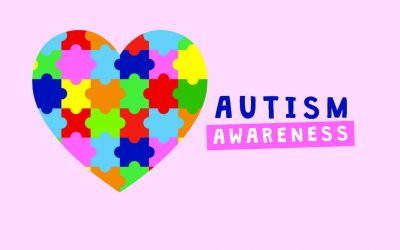Norm Ledgin Interview
An interview with Norm Ledgin conducted by Karen Simmons, July 1, 2002
Bio: Norm Ledgin is a professional safety educator and in the newspaper publishing business for fifteen years. In 1984 he and his wife Marsha turned to fulltime parenting, being the parent of a young man diagnosed with Asperger’s Syndrome. In his latest book, Asperger’s and Self Esteem, Insight and Hope Through Famous Role Models, Norm relies on history to present a hopeful attitude about Asperger’s people’s future prospects. He makes his home in Oxford Township, Kansas with his wife and two sons.
An Interview with Norm Ledgin, author “Diagnosing Jefferson†and newly released “Asperger’s and Self Esteem, Insight Through Famous Role Models.
Karen: I’ve reviewed your first book, Diagnosing Jefferson as well as your recent book, “Asperger’s and Self Esteem, Insight Through Famous Role Models. What is your background and area of expertise, Norm?
Norm: I’m a political journalist (Litt. B. in Journalism, M.A. in Political Science). I trashed my career inadvertently while still at Rutgers University-by co-chairing a Washington restaurant “sit-in†(before they were called “sit-insâ€) in 1948, by joining a black fraternity in 1949, and by giving my name as an American sponsor of the Stockholm Peace Appeal (urging the U.S. and U.S.S.R. to renounce a nuclear arms race) in 1950.
These “misstepsâ€-the last of which was condemned broadly by the House Un-American Activities Committee-earned me a blacklisting, so I never worked for the “better†newspapers. I then emigrated to such Third World places as Louisiana and Kansas to settle for unspectacular work (promoting traffic safety) in order to feed my family.
The other part of my “expertise†was having a son diagnosed with Asperger’s Syndrome when he was twelve in 1996 and subsequently reading everything I could find on the subject.
Karen: Very interesting, Norm. I believe I was at a few “sit-in’s myself. What made you come up with the idea of writing about famous role models?
Norm: While reading biographies and works of Thomas Jefferson, which I had been doing since the late 1940s, I found what appeared to be coincidences between my son’s behavior and Jefferson’s. When I counted twenty similarities in their shared idiosyncrasies, I was impressed. When I counted fifty, I decided to write Diagnosing Jefferson. Later I realized there were other achievers in history with whom to match modern diagnostic criteria for Asperger’s Syndrome. That led to my lecturing on the subject of “role models†and, subsequently, writing Asperger’s and Self-Esteem.
Karen: How did you decide which role models to include?
Norm: Suspicion was my main drive toward most of the role models. I read their biographies, concentrating mainly on their childhood through teen years. (By the way, you only find objective biographies of people after they’ve died.) Temple Grandin mentioned a few of them in her 1995 book, Thinking in Pictures.
I based my suspicions on famous achievers’ early aloofness in social situations, nonverbal issues such as awkwardness, their fixations, and publicly-perceived “impairments†in their careers or other social relationships (recognizing they might never have thought of their decisions as reflecting impairment at all).
I rejected a number of people I’d suspected of being on the autism/Asperger’s continuum because I found in them signs of other conditions, such as manic-depression or pervasive developmental disorder not otherwise specified.
Karen: Where did you go to obtain information about these role models, Norm?
Norm: I scoured the biography shelves at the public library, plus magazine pieces and Internet articles. If there was even a smidgin of information about early childhood and reliable descriptions running through the teen years of the selected historical celebrities, any person with knowledge of Asperger’s might draw reasonable conclusions about whether they should be candidates for the autism/Asperger’s continuum.
The most difficult part of such an examination was to make a judgment about what the diagnostic criteria refer to as social or vocational “impairment.†That’s a negative term that a supposedly “impaired†person isn’t always ready to accept, so I tried to see matters through the celebrity’s eyes as well as society’s. For example, Madame Curie lived in relative poverty immediately following her discovery (of extracting radium from pitchblende) because she believed it would be wrong to profit personally from the results of scientific inquiry. Society in general doesn’t understand such ethics, so it regards people like Marie Curie as somewhat cuckoo-definitely “impaired.â€
Karen: What do other historians say about the book, the concept, the ideas?
Norm: Most historians have avoided commenting because they don’t know what to make of it. They would rather arrange facts revealed in dusty documents than try to get into the mental processes or labyrinths of reasoning those very facts reveal about their subjects. Only a few have examined their subjects’ possible motivations or personal anguish and have made stabs at guessing the root causes of what troubled their heroes or heroines.
Had modern historical biographers matched Thomas Jefferson’s idiosyncrasies with diagnostic criteria for Asperger’s instead of scratching their heads about his quirks, they’d have made the same discovery about Jefferson that I have. Supporting my conclusions about Jefferson in a logical and orderly manner was easier for me than finding someone with the guts and wherewithal to publish them.
Karen: Why weren’t these individuals labeled in the first place with something?
Norm: They were labeled-as odd, eccentric, quirky, strange, even creepy-but those are the categorical judgments of a society generally unschooled in science. What we have learned in the past 58 years about autism-an evolving body of knowledge-has provided us tools by which to appreciate a few of the more dramatic facts of history.
For instance, why did the widower Jefferson sleep with his one-quarter-black sister-in-law (and house slave by inheritance) for 38 years and impregnate her eight times (such facts arising from scientific and historical studies)? Because skin-color differences didn’t bother them when, at a critical point in both their lives, they discovered they were in love and couldn’t care less how others viewed the situation. The “slave issue†is less an issue when one learns what TJ tried to do about it at various stages of his long life (83 years).
Does that relationship put a new light on Thomas Jefferson or what? At once we have a man faithful to a commitment and who honored it despite its effect on his public image, who had a strong sense of family ties when selecting the one person who could meet his needs for trusting and loving, who despite throwing parties “for show†was at heart a loner-resisting intrusion into the privacy of his south wing suite at Monticello (of which Sally Hemings was caretaker), all these and more in the example of that relationship being hallmark characteristics of an adult with traits of Asperger’s Syndrome.
Karen: How do their descendants feel about making these claims?
Norm: Jefferson descendants in both family lines-those descended from the 10-year marriage and those from the 38-year “liaisonâ€-have not been offended, nor even very much surprised, by any of my dozens of Asperger’s-trait conclusions.
Realize, please, that high-functioning autistics are often very talented people. Family members appear to have turned that around into a syllogism, to wit: “Many of us who are descended from TJ are talented. Such talents often spring from high-functioning autism. Our family probably has a strain of autism running through it (and deep-down we’ve had our suspicions of that).â€
It’s common knowledge that the Randolphs of Virginia, the family of TJ’s mother, were thought to have had more than their “share†of eccentrics, so no Jefferson genealogist is going to give anyone an argument.
As for other families mentioned in Asperger’s and Self-Esteem, the book hasn’t been out long enough to bring a response.
Karen: Do you believe in synchronicity, meaning that coincidences are not merely coincidences, rather, events happen at a certain time for a reason?
Norm: If by synchronicity you mean that the Louisiana Purchase was a Jefferson achievement because, at that particular moment, Napoleon needed cash, then yes. If you mean the intervention of fate, or perhaps divine intervention, then no.
I could go on. The eccentric folksinger John Hartford wrote “Gentle on My Mind†(not a historic achievement but certainly a major musical one) because he was infatuated with Julie Christie after watching her in Dr. Zhivago. Had she not been in that film, there might not have been such a song.
Had Bela Bartok been a better pianist or more of a mainstream composer, he might not have seen possibilities for a career shift when hearing a peasant girl sing in a musical scale foreign to his trained ear. He might not have gone on to collect 6,000 folk melodies to share with the rest of us.
Had Carl Sagan been unimpressed with his religious upbringing and not seen in Moses and Jesus something special and even otherworldly, he might not have believed they were aliens, which belief led to his positing and promoting theories about the existence of life on other planets.
Karen: What impact did you hope to have with the book?
Norm: As has already happened-and it happened many times after publication of Diagnosing Jefferson two years ago-people have e-mailed or written me, or they’ve come up to me at meetings, commenting how my conclusions have turned their children’s lives around toward a more positive outlook.
My son Fred was among the first to read it, and he told Tony Attwood that it made him realize he could be successful despite his condition.
That’s all I had ever hoped for.
Karen: Thank you for your time, Norm, you’ve are incredibly insightful and inspirational.


